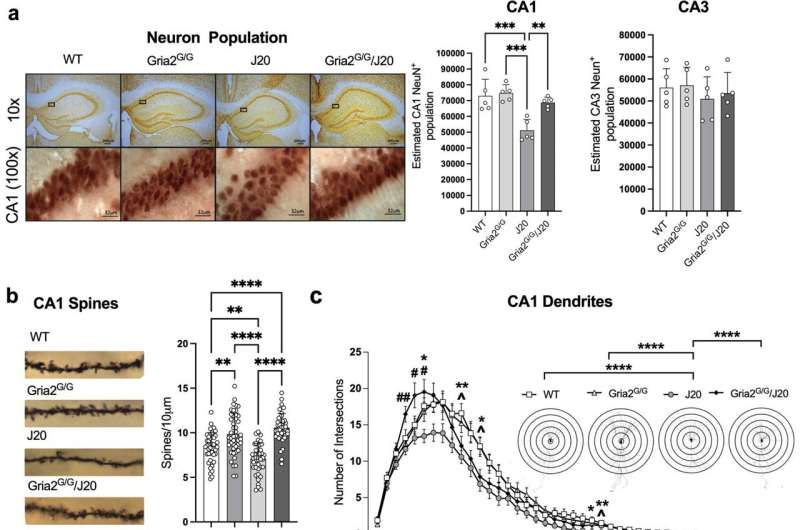This article has been reviewed according to Science X's editorial process and policies. Editors have highlighted the following attributes while ensuring the content's credibility:
fact-checked
peer-reviewed publication
proofread
Broken brain connections, not protein clumps, may lie behind Alzheimer's, study in mice suggests

Researchers at St Vincent's Hospital in Sydney have achieved a breakthrough in our understanding dementia and new way forward to its treatment. Through their discovery, the team restored nerve cell connections (synapses) that are destroyed in the Alzheimer's brain, which are thought to store memory.
Essentially they rescued memory without having to remove any of the protein clumps (beta-amyloid), which has long been thought to cause the disease.
The study provides a new understanding of Alzheimer's disease and a new approach to ultimately treating it.
St Vincent's Sydney's Professor Bryce Vissel—the leader of the international team of scientists behind the discovery—said that microscopic nerve cell connections in the brain, known as synapses, are thought to be essential to memory formation, but this has not been proven
"People living with Alzheimer's experience a loss of these nerve cell connections which has been speculated to cause debilitating loss of memory that is synonymous with the disease," said Professor Vissel.
"Our research set out to answer the question: by rescuing these connections, can we rescue memory?
"We now have compelling evidence, in a model of Alzheimer's, that preventing the breakdown in these synapses is possible.
"This in turn rescues memory, offering a new way forward to understanding and treating the disease."
The key to the discovery—published in Molecular Neurodegeneration—was the identification of a new process that regulates the connections between brain cells, known as RNA editing.
"RNA editing can be used as a molecular switch. By flicking the switch in the mice models we use in our research we were able to stop the brain cell connections from breaking down.
"Remarkably, we discovered that by doing so we restored lost memory in the mice.
"For many years people have been focusing on removing amyloid (a build-up of protein) from the brain as a pathway to an Alzheimer's cure but without any success.
"We found RNA editing worked to restore nerve cell connections without having to remove any amyloid from the animals' brains resulting in the return of memory.
"Dementia is now the number one cause of death of women in Australia. There are no cures.
"Having shown that preventing synapse loss offers a way forward to treating Alzheimer's, our team will now accelerate work towards developing an effective treatment for this devastating disease," Prof Vissel said.
More information: Amanda L. Wright et al, The Q/R editing site of AMPA receptor GluA2 subunit acts as an epigenetic switch regulating dendritic spines, neurodegeneration and cognitive deficits in Alzheimer's disease, Molecular Neurodegeneration (2023). DOI: 10.1186/s13024-023-00632-5


















